Commission presents European Strategic Energy Technology Plan: towards a low carbon future
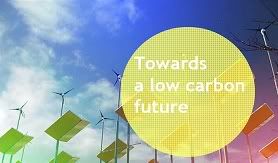 The European Commission has presented the European Strategic Energy Technology Plan (SET-Plan), which aims to accelerate the development and implementation of low carbon technologies which must play a vital role in reaching the EU's energy and climate change targets.
The European Commission has presented the European Strategic Energy Technology Plan (SET-Plan), which aims to accelerate the development and implementation of low carbon technologies which must play a vital role in reaching the EU's energy and climate change targets.The inter-related challenges of climate change, security of energy supply and competitiveness are multifaceted and require a coordinated response. The Commission is piecing together a far-reaching jigsaw of policies and measures: binding targets for 2020 to reduce greenhouse gas emissions by 20% and ensure 20% of renewable energy sources in the EU energy mix; a plan to reduce EU global primary energy use by 20% by 2020; carbon pricing through the Emissions Trading Scheme (EU ETS) and energy taxation; a competitive Internal Energy Market; an international energy policy.
Technology is vital in reaching all the above-mentioned objectives. A dedicated policy to accelerate the development and deployment of cost-effective low carbon technologies is therefor required. To meet the 2020 targets, the EU wants to lower the cost of clean energy and put EU industry at the forefront of the rapidly growing low carbon technology sector. In the longer term, if the EU is to meet the greater ambition of reducing our greenhouse gas emissions by 60-80% by 2050, new generations of technologies have to be developed through breakthrough in research.
The transition to a low carbon economy will take decades and touch every sector of the economy, but we cannot afford to delay action. Decisions taken over the next 10-15 years will have profound consequences for energy security, for climate change, for growth and jobs in Europe.
Key technology challenges for the next 10 years
To achieve the 2020 targets a twin-track approach is needed. Reinforced research has to lower costs and improve performance. Pro-active support measures are to create business opportunities, stimulate market development and address the non-technological barriers that discourage innovation and the market deployment of efficient and low carbon technologies. Table 1 (click to enlarge) outlines the current and future advantages and disadvantages of different sources of electrical energy; note the projected competitiveness of biomass as compared to fossil fuels. A comprehensive analysis of the weaknesses and strengths of current and future technologies can be found in the Technology Map [*.pdf]. The document outlines the long term potential per technology and required breakthroughs (summary below).
To achieve the 2050 vision, towards complete decarbonisation, the EU wants to develop a new generation of technologies through major breakthroughs. Even if some of these technologies will have little impact by 2020, it is vital to reinforce efforts today to ensure that they come on-stream as early as possible. The Union also has to plan for major organisational and infrastructure changes.
Key EU technology challenges for the next 10 years to meet the 2020 targets:
- Make second generation biofuels competitive alternatives to fossil fuels, while respecting the sustainability of their production
- Enable commercial use of technologies for CO2 capture, transport and storage through demonstration at industrial scale, including whole system efficiency and advanced research
- Double the power generation capacity of the largest wind turbines, with off-shore wind as the lead application
- Demonstrate commercial readiness of large-scale Photovoltaic (PV) and Concentrated Solar Power
- Enable a single, smart European electricity grid able to accommodate the massive integration of renewable and decentralised energy sources
- Bring to mass market more efficient energy conversion and end-use devices and systems, in buildings, transport and industry, such as poly-generation and fuel cells
- Maintain competitiveness in fission technologies, together with long-term waste management solutions
 energy :: sustainability :: climate change :: nuclear :: fusion :: fossil fuels :: carbon capture and storage :: biomass :: bioenergy :: biofuels :: solar :: wind :: hydro :: renewables :: EU ::
energy :: sustainability :: climate change :: nuclear :: fusion :: fossil fuels :: carbon capture and storage :: biomass :: bioenergy :: biofuels :: solar :: wind :: hydro :: renewables :: EU :: - Bring the next generation of renewable energy technologies to market competitiveness
- Achieve a breakthrough in the cost-efficiency of energy storage technologies
- Develop the technologies and create the conditions to enable industry to commercialise hydrogen fuel cell vehicles
- Complete the preparations for the demonstration of a new generation (Gen-IV) of fission reactors for increased sustainability
- Complete the construction of the ITER fusion facility and ensure early industry participation in the preparation of demonstration actions
- Elaborate alternative visions and transition strategies towards the development of the Trans-European energy networks and other systems necessary to support the low carbon economy of the future
- Achieve breakthroughs in enabling research for energy efficiency: e.g. materials, nano-science, information and communication technologies, bio-science and computation.
Public and private energy research budgets in the EU have declined substantially since 1980s. This has led to an accumulated under-investment in energy research capacities and infrastructures. If EU governments were investing today at the same rate as in 1980, the total EU public expenditure for the development of energy technologies would be four times the current level of investment.
The energy innovation process, from initial conception to market penetration, also suffers from unique structural weaknesses. It is characterised by long lead times, often decades, to mass market due to the scale of the investments needed and the technological and regulatory inertia inherent in existing energy systems. New technologies are generally more expensive than those they replace while not providing a better energy service. Therefor a major policy, science and research and planning effort must be introduced.
What is the Commission proposing?
The SET-Plan proposes to deliver the following results: (i) a new joint strategic planning, (ii) a more effective implementation, (iii) an increase in resources, and (iv) a new and reinforced approach to international cooperation.
Joint strategic planning
Joint planning will enable a better orientation of efforts and would be the seed to bring together our researcher and our industry.
Early 2008 the Commission will establish a Steering Group on Strategic Energy Technologies to steer the implementation of the SET-Plan, reinforcing the coherence between national, European and international efforts. The Group, chaired by the Commission, will be composed of high level government representatives from Member States.
In the first half of 2009, to review progress the Commission will organise a European Energy Technology Summit that will bring together all stakeholders in the entire innovation system, from industry to customers, as well as representatives of the European institutions, the financial community and our international partners.
To support the definition of energy technology objectives, as well as to build consensus around the SET-Plan programme, the Commission will establish an open-access information and knowledge management system on energy technologies.
Effective implementation
For effective implementation we need more powerful mechanisms that can leverage the potential of European industry and researchers.
In 2008 the Commission proposes to launch six new European Industrial Initiatives that will target sectors for which working at Community level will add most value – technologies for which the barriers, the scale of the investment and risk involved can be better tackled collectively.
The initiatives are as follows:
- Bioenergy Europe Initiative: focus on 'next generation' biofuels within the context of an overall bioenergy use strategy.
- European Wind Initiative: focus on large turbines and large systems validation and demonstration (relevant to on and off-shore applications).
- Solar Europe Initiative: focus on large-scale demonstration for photovoltaics and concentrated solar power.
- European CO2 capture, transport and storage initiative: focus on the whole system requirements, including efficiency, safety and public acceptance, to prove the viability of zero emission fossil fuel power plants at industrial scale.
- European electricity grid initiative: focus on the development of the smart electricity system, including storage, and on the creation of a European Centre to implement a research programme for the European transmission network.
- Sustainable nuclear fission initiative: focus on the development of Generation-IV technologies.
To bring about a move from today's model of collaborating on projects towards a new paradigm of implementing programmes and to align these programmes with the SET-Plan priorities, the Commission proposes to create a European Energy Research Alliance.
The European Institute of Technology could provide an appropriate vehicle to realise this ambition, through a Knowledge and Innovation Community on energy and climate change.
The Commission proposes to initiate in 2008 an action on European energy infrastructure networks and systems transition planning. It will contribute to optimise and harmonise the development of low carbon integrated energy systems across the EU and its neighbouring countries. It will help the development of tools and models for European level foresight in areas such as smart, bi-directional electricity grids, CO2 transport and storage and hydrogen distribution.
Streamlining resources
Implementation of the SET-Plan will help overcome the fragmentation of the European research and innovation base, leading to a better overall balance between cooperation and competition. Encouraging more focus and coordination between different funding schemes and sources will help to optimise investment.
Two challenges need to be addressed: mobilising additional financial resources, for research and related infrastructures, industrial-scale demonstration and market replication projects; and education and training to deliver the quantity and quality of human resources required to take full advantage of the technology opportunities that the European energy policy will create.
At the end of 2008 the Commission intends to present a Communication on financing low carbon technologies that will address resource needs and sources, examining all potential avenues to leverage private investment, including private equity and venture capital, enhance coordination between funding sources and raise additional funds.
International cooperation
The Commission stresses the need for Europe to take its international cooperation on energy technology to a new dimension. The measures proposed in the SET-Plan (e.g. the Steering Group, European Industrial Initiatives and the European Energy Research Alliance) should bring about a reinforced international cooperation strategy. We also need to ensure that the EU increasingly speaks with one voice in international fora, where appropriate, to achieve a more coherent and stronger partnership effect.
Outline
The following tables from the Technology Map summarise for each technology: the description of the current status and the anticipated developments; the current and future potential share in the European energy demand; the quantified impacts of technology penetration (Environment - Greenhouse gas emissions; Security of supply; and Competitiveness); the barriers to penetration in the European energy market; the needs to realise its potential and the synergies with other technologies and sectors.
Biomass cogeneration, zero emissions power plants:
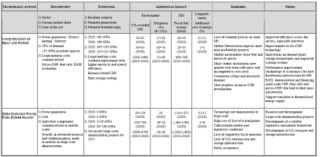
Biofuels and smart grids:
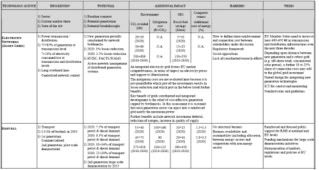
Nuclear fission, nuclear fusion:

Wind, solar photovoltaics, concentrated solar power:
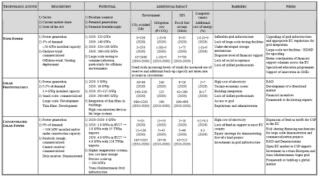
Solar heating and cooling, large hydropower:
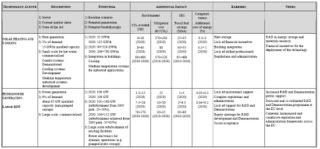
Small hydropower, geothermal, ocean wave power:
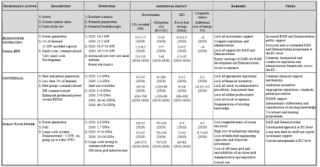
Hydrogen and fuel cells:

References:
EU Commission: European Commission proposes a plan to accelerate energy technologies for a low-carbon future - November 22, 2007.
EU Commission, Com(2007) 0723: Towards a low carbon future: European Strategic Energy Technology Plan - November 22, 2007.
EU Commission, DG Energy: European Strategic Energy Technology Plan (SET Plan), website.
EU Commission, DG Energy: Technology map [*.pdf] - A brief and comprehensive description of the current status and prospects of key energy technologies aiming to provide information for the identification of potential European initiatives that could be considered as part of SET-Plan.
 --------------
--------------
 German industrial conglomerate MAN AG plans to expand into renewable energies such as biofuels and solar power. Chief Executive Hakan Samuelsson said services unit Ferrostaal would lead the expansion.
German industrial conglomerate MAN AG plans to expand into renewable energies such as biofuels and solar power. Chief Executive Hakan Samuelsson said services unit Ferrostaal would lead the expansion.









2 Comments:
Europeans are behind the curve. Americans may very well have fusion reactors delivering power to the grid in 3 to 5 years.
Bussard Fusion Reactor
Easy Low Cost No Radiation Fusion
It has been funded:
Bussard Reactor Funded
The above reactor can burn Deuterium which is very abundant and produces lots of neutrons or it can burn a mixture of Hydrogen and Boron 11 which does not.
The implication of it is that we will know in 6 to 9 months if the small reactors of that design are feasible.
If they are we could have fusion plants generating electricity in 10 years or less depending on how much we want to spend to compress the time frame. A much better investment that CO2 sequestration.
BTW Bussard is not the only thing going on in IEC. There are a few government programs at Los Alamos National Laboratory, MIT, the University of Wisconsin and at the University of Illinois at Champaign-Urbana among others.
The Japanese and Australians also have programs.
Isn't ITER a collaboration between the EU, the US, Russia, China, India, and Japan?
Maybe such a well funded international cooperation effort stands a good chance of determining whether fusion will ever be possible.
Post a Comment
Links to this post:
Create a Link
<< Home